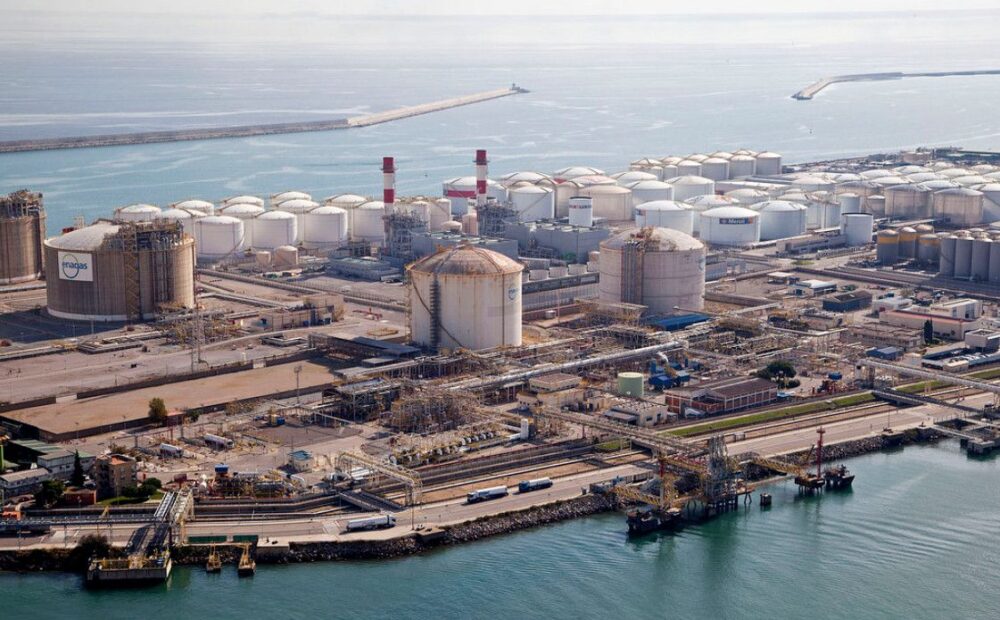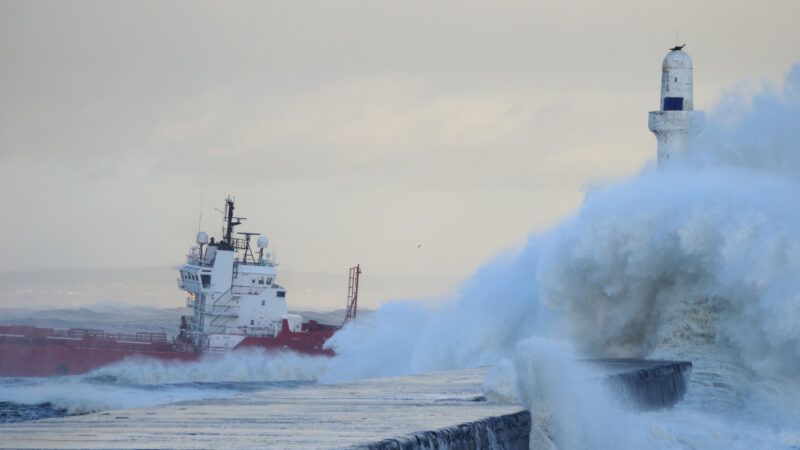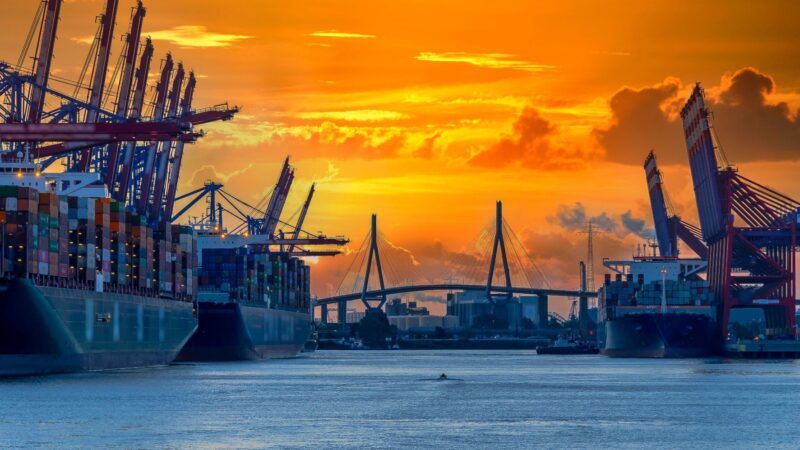 Port de Barcelona aims to consolidate itself as a 'hub' for the distribution of liquefied natural gas. [Image of Port of Barcelona]
Port de Barcelona aims to consolidate itself as a 'hub' for the distribution of liquefied natural gas. [Image of Port of Barcelona]
Energy Transition: Ports As Part Of The Solution To Climate Change
The energy transition is something we have to think about both collectively (communities and corporations) and individually. We have to move towards a new way of managing energy, from generation and distribution to final consumption. There is a long road ahead in all areas and the change won't be immediate. But the technology to shift to cleaner energy already exists.
 Port de Barcelona aims to consolidate itself as a 'hub' for the distribution of liquefied natural gas. [Image of Port of Barcelona]
Port de Barcelona aims to consolidate itself as a 'hub' for the distribution of liquefied natural gas. [Image of Port of Barcelona]
Today we know that it will be possible to use exclusively renewable energy as long as we work on large-scale storage systems using batteries, hydrogen or other systems currently being developed. "Every day that goes by without taking advantage of the natural resources available to us, such as the sun and the wind, is a day wasted," says Xavier Sabaté, head of Environmental projects for the Port of Barcelona.
Ports versus climate change
The characteristics and location of ports condition their energy transition. For example, the situation of the Port of Barcelona (with little wind and proximity to the El Prat airport) very much limits its ability to take advantage of wind energy. However, "we have many options for using solar power or excess heat and cold on some docks," explains Sabaté.
Ports will be part of the solution to climate change because they are nodes connecting the rest of the logistics chain and can help these incorporate more sustainable modes of transport.
The energy transition in ports will have to focus mainly on two arenas: facilities and buildings, and the mobility of cargo and passengers (ships, lorries, terminal machinery and vehicles), where they must "promote the shift to cleaner alternative fuels, such as liquefied natural gas, and electric connections from dock to ship," says Sabaté.
Ports will be part of the solution to climate change because they are nodes connecting the rest of the logistics chain and can help these incorporate more sustainable modes of transport.
So, for the ships to cut their polluting emissions while they are in port, one of the options the Port de Barcelona is analysing is electrifying certain docks with the necessary voltage. Ports like Gothenburg, Hamburg, Antwerp, Stockholm and Oslo in Europe; Long Beach, Seattle and San Diego in the United States; and Vancouver in Canada are considered leaders in dock electrification.
And there are several noteworthy initiatives among the ports that have already kicked off projects to generate and store renewable energy. "Rotterdam already has 200 MW of wind energy and expects to reach 300 MW by 2020. Plus, they are studying how to take advantage of the more than 400 hectares of existing roofs to install solar panels. They expect to have 100 hectares covered by 2020," explains Xavier Sabaté.
"For its part, the Port of Hamburg has 25 MW of wind energy, in addition to solar facilities on the roofs of some warehouses and terminals. In Sweden, the big ports have photovoltaic facilities. In Aalborg (Denmark), the port authority covers the energy needs of its office buildings with solar power," adds the head of Environmental projects.
In order for ships to reduce their polluting emissions during the time they are docked at the port, one of the options that the Port of Barcelona is analyzing is the electrification of certain docks with the appropriate power.
![The Port of Barcelona has renewed its fleet of cars betting on the electric vehicle, which now totals 40 in the port. [Image of Port of Barcelona]](https://piernext.portdebarcelona.cat/wp-content/uploads/2018/10/VE_portdebarcelona.jpg)
Sustainable mobility
The Port of Barcelona's commitment to electric vehicles has several parts. On the one hand, the fleet of vehicles is being modernised, with 40 already running on electric power. Furthermore, charging points have been installed throughout the port area, for both the port fleet and workers' personal vehicles.
The Catalan port is also promoting the use of liquefied natural gas (LNG) as an alternative fuel for ships, lorries and terminal machinery as it cuts NOx emissions 85% and completely eliminates sulphur oxides and particles. So, a Balearia ferry is already running on LNG while in port and during arrival, departure and docking manoeuvres. There is also a pilot programme in place to supply electricity to a ferry using a natural gas generator installed on the dock and 26 lorries have been converted to the Dual-Fuel system, which allows them to run on both petrol and natural gas. These are just some of the initiatives to promote the use of natural gas, although the Port of Barcelona is also developing the infrastructure needed to consolidate its position as the main LNG distribution hub in the Mediterranean.
Plus, a study is being conducted to determine the potential for using renewable energy at the Port of Barcelona. Because, Sabaté believes, "ports must be part of the solution to climate change and reduce gas emissions from port operations as much as possible."
The Catalan port is also promoting the use of liquefied natural gas (LNG) as an alternative fuel for ships, trucks and terminal machinery, since it reduces NOx emissions by 85% and completely eliminates particles and sulfur oxides.
The role of port authorities
Port authorities are responsible for complying with the legal framework that increasingly requires an energy shift. But they must also lead and coordinate new initiatives to get out ahead of innovations and changes. And one of the main ones is to think about the new structures that will govern the new energy management system. The new model, known as 'distributed energy', is a whole new way to generate, distribute and consume power, with various energy resources, storage options and management systems for highly diverse demand.
Renewable energies are also on the horizon for the Port of Barcelona, both in terms of production and advanced management: "The time will come when we generate energy and pay different rates depending on peak production and low demand," explains Sabaté. "To do so, we must have smart grids, which are already in certain ports and industrial parks in Europe, which use flexible systems that adjust to demand and distribute voltage evenly taking into account the best interests of the community as a whole." Although we won't see them in the immediate future, "studying these ways to manage energy is on the agenda for the Port of Barcelona," concludes Sabaté.
Finally, port authorities have to contribute to a vision of the future and of the whole, and coordinate the many actions needed to achieve synergies and economies of scale. They can implement tariff policies to promote change and investment in companies, and must prepare the port infrastructure, which wasn't originally designed for this new era we are living in.





